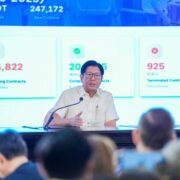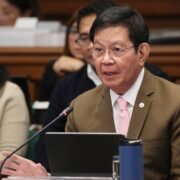Breathing life into dwindling industry

The Bangko Sentral ng Pilipinas (BSP) is going full steam ahead with its plan to saturate the country with polymer banknotes that it believes to be more durable, tamper-proof, and environment-friendly than the still more widely used paper versions.
Nevertheless, the Department of Agriculture (DA) is making a last-ditch effort to dissuade the BSP from using only polymer and instead maintain in circulation a sizable volume of Philippine banknotes that use locally grown abaca. It noted that over 1.5 million Filipinos—among the country’s poorest—depend almost entirely on the indigenous fiber for their livelihood.
“We will request that the Bangko Sentral ng Pilipinas reconsider its decision to remove abaca fiber from Philippine banknotes, given the impact this decision has on the livelihoods of millions who rely on the abaca industry,” said Agriculture Secretaty Francisco Tiu Laurel Jr., who has also urged the Department of Foreign Affairs to incorporate abaca fiber in the production of Philippine passports.
More viable options
BSP Deputy Governor Mamerto E. Tangonan pointed out then to the Senate committee on banks, financial institutions, and currencies that the BSP is actually not that big a market player. After all, it does not purchase abaca directly from the farmers to produce the paper banknotes that are 80 percent cotton and 20 percent abaca.
Instead, the locally produced abaca is sold to processors and exporters that sell the abaca pulp to manufacturers abroad who produce specialty paper that is used to make banknotes.
“The share of the estimated abaca content of the Philippine banknotes to total volume of abaca fiber production in 2020 is just around 2 percent. Meanwhile, the share of abaca content of our banknotes to abaca export earnings is less than 2 percent at its peak,” Tangonan added.
Dwindling demand
As of 2023, the Philippines accounted for close to 90 percent of the global supply of abaca, which is known internationally as Manila hemp.
They are known for their tensile strength and resistance to saltwater damage, making them ideal for the manufacture of marine cordage. They can also be used to make a wide variety of products from fishing lines and nets, bags, diapers, pill coatings to surgical masks.
The abaca sector’s growth potential has been dimmed, however, by increase in competition and the dwindling demand as traditional users shifted to other alternatives such as synthetic fiber. These factors contributed to the 4-percent decline in abaca production last year.
It is thus laudable that the DA is training its focus on this long neglected sector. But perhaps going to the BSP is not the most wise option.
Indeed, even if it manages to persuade the BSP does continue using paper notes, the upside to the abaca industry will not be that be big enough to outweigh the stated benefits of using polymer banknotes.
Emergent green economy
“The BSP strongly supports efforts to assist the country’s abaca industry so it can benefit from this huge demand. Relevant government agencies are working with the industry to improve its competitiveness and help it access wider international markets,” the BSP said.
“There are vast emerging opportunities to widen and diversify the client and product base … With the support of key government agencies, the abaca industry could position itself in the emergent green economy,” Tangonan added.
There are opportunities here, too.
Philippine Fiber Industry Development Authority executive director Arnold Atienza noted that while the local sector was crying out for a domestic market, imported fibers—including abaca—are brought in, thus the call to regulate their entry.
“Why are we importing abaca when we have [plenty of] abaca?” Atienza asked.
Reflecting on that question will easily lead to the logical conclusion that boosting the abaca sector will require much more than just asking the BSP to continue using paper banknotes.
It will yield issues on the competitiveness of local abaca, impact of natural disasters on the main abaca-producing provinces in the Bicol region that the DA will have to have a handle on if it truly wants to ensure that this traditional sector will survive and thrive the way that it did centuries ago.

















